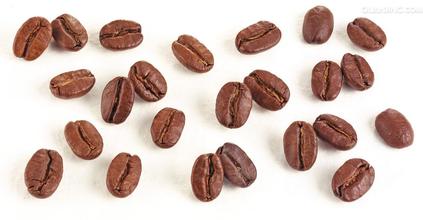Panamanian Emerald Manor Esmeralda Manor
Panamanian Jade Manor
Panamanian Emerald Manor-Esmeralda Manor (Panama Geisha Hacienda La Esmeralda)
In the early years, the identification of top coffee mostly followed Japan, while Geisha, with its hurricane-like power, hit the coffee world. The coffee revolution was so fierce that the Blue Mountains of Jamaica and Kona of Hawaii, which had occupied the throne of the coffee kingdom for a long time, had to retreat. This wild species, which originated in Ethiopia, is now widely used in major coffee producing areas after numerous battles. And its best spokesman is the "La Esmeralda" manor from Panama, Esmeralda's rose summer coffee is the most famous coffee in the rose summer variety.
Panamanian Jade Manor
Panamanian Jade Manor
Haines, a Swede, in 1924. Elliott founded Esmeralda Farm, which was not a coffee grower but a ranch. Forty years later, Daniel Lou in 1964. Mr. Bidarson's grandfather, Luther Ruffer. Mr. Bidarson bought Esmeralda Farm in order to have an old home after retirement, grandfather Luthor. Mr. Bidasson was born in Sweden and served as president of the Bank of America and director of United Nations Development.
His son Blaise. Mr. Bidarsson moved to Panama from California in 1973 and inherited his father's farm. In 1987, he converted most of the farm to growing coffee. In 1994, he invested in the machinery and equipment of refined coffee to create a brand. While Mr. Bidarson and his wife Susan started a formal business on the coffee farm, they also raised three children, Elligo (born in Philadelphia in 1966), Rachel (born in Sweden in 1967) and Danielu (born in Panama in 1974).
In 1996, Blaise and Rachel visited a farm for sale in the Haramijun area of the Bocketi Valley, and was attracted by the beautiful farm and immediately bought it. This is Esmeralda? Daniel Lou, the third son of Haramiqiong Farm. It is in this farm that Mr. Bidasson has grown Geisha coffee, which has attracted the attention of the coffee world.
Panamanian rose summer grows at an altitude of 1500-1650 meters, and its unique growth environment makes it unique:
Dry aroma: tea, flowers (magnolia, tulips) vanilla plants, milk, black sugar sweet, high-grade champagne and aroma up.
Wet fragrance: apricot, caramel, milk, flower.
Sipping: good oil quality, delicate Lishan special tea feeling, high-end liquor astringent but then turned into a delicate and smooth Body to fill the mouth.
Berry candy and spices are sweet, accompanied by floral aromas, the finish is full of floral aromas, fruit sweetness and body are quite long-lasting, the lower the temperature, the more delicate the acidity.
La Esmeralda Manor has won 12 coffee competitions so far, and the highest bidding record for three times in online open bidding is US $21 in 2004, US $50.25 in 2006, and US $130 in 2007. Of course, other countries have also raced a pound of good coffee close to $50 (Brazil's CoE champion Fazenda Santa inflows in 2005) and Guatemala CoE champion El Injerto $80.20 in 2008, but you pay attention to the time point, that is, when La Esmeralda set a record price, there was no bid to surpass her before, but she will surpass others and say she is a record creator, no fluke!
The brilliant experience of Esmeralda Farm
Panama's highest grade coffee ranks first for four consecutive years in 2004, 2005, 2006 and 2007!
The American Fine Coffee Association (SCAA) ranked No. 1 in the World Coffee Cup Test in 2005, 2006 and 2007.
Tropical rainforest protection group coffee quality cup test ranked first in 2004, 2006 and 2007!
Guatemala Rose Summer
Guatemala Rosa-Akatilan fruit producing area (Guatemala Acatenango Gesha).
In 2007, Guatemala added the eighth coffee producing area, Acatenango Valley (R), which we translated into "Akatilang region".
In 2007, Anacaf é (Guatemalan Coffee Association) not only promoted it at the SCAA exhibition, but also arranged a special topic to explain to the international judges during the national competition. In the past, Guatemala claimed to have seven major producing areas, not only distinguishing features, but also giving buyers and consumers a good memory. Antigua, Micro Plateau, Lake Attitan, Koban Rain Forest and so on, each district can find excellent manors and good coffee with local characteristics.
Acatenango is located in Chimaltenango province, Guatemala. More than 5000 hectares of coffee farms in the region have fertile volcanoes, mainly located in two major volcanic mountains, and almost all have forests and shade trees. As can be seen from the above photos, almost all of the estates are shaded and planted, and the main varieties are bourbon and some Catuai and Caturra.
Akatilango two major volcanoes, Volcan de Fuego and Volcan Acatenango respectively, especially Acatenango is the third peak of Central American volcanoes, and across the Fuego volcano is the Yatitan Lake region. The annual rainfall in this area is 48 to 72 inches, and the average annual temperature is 14 ~ 31 degrees C. the temperature difference is large enough, so the density of beans is compact, which is helpful to the flavor. The coffee harvest season is mainly from mid-January to March. At present, the Kaqchiquels people still live in this area and maintain traditional farming methods; in total, there are about 4000 farmers in this area, and coffee cultivation dates back to 1880.

Important Notice :
前街咖啡 FrontStreet Coffee has moved to new addredd:
FrontStreet Coffee Address: 315,Donghua East Road,GuangZhou
Tel:020 38364473
- Prev

What kind of environment is needed to grow coffee? what are the characteristics of coffee?
While the reputation of the King of Coffee with Blue Mountain Coffee went viral, orders flew in like snowflakes, forcing Jamaica to speed up production. In 1932 alone, Jamaica produced 15.5 tons of coffee! One of the consequences of mass production is the decline in quality. The reputation of Jamaican coffee for nearly 30 years seems to have been destroyed overnight. Of course the government and farmers want to.
- Next

Honduran coffee related knowledge Honduran coffee elements
Honduras produces two kinds of coffee of very good quality, which are highly respected by coffee lovers. One is the highland coffee growing at 1000-1500 meters above sea level, and the other is the selected highland coffee growing at 1500-2000 meters above sea level, which represents the highest level in Honduras. Most of the Honduran coffee is exported to the United States and Germany. The granules of coffee beans in Honduras are more shaped than those in Honduras.
Related
- Does Rose Summer choose Blue, Green or Red? Detailed explanation of Rose Summer Coffee plots and Classification in Panamanian Jade Manor
- What is the difference between the origin, producing area, processing plant, cooperative and manor of coffee beans?
- How fine does the espresso powder fit? how to grind the espresso?
- Sca coffee roasting degree color card coffee roasting degree 8 roasting color values what do you mean?
- The practice of lattes: how to make lattes at home
- Introduction to Indonesian Fine Coffee beans-- Java Coffee producing area of Indonesian Arabica Coffee
- How much will the flavor of light and medium roasted rose summer be expressed? What baking level is rose summer suitable for?
- Introduction to the characteristics of washing, sun-drying or wet-planing coffee commonly used in Mantenin, Indonesia
- Price characteristics of Arabica Coffee Bean Starbucks introduction to Manning Coffee Bean Taste producing area Variety Manor
- What is the authentic Yega flavor? What are the flavor characteristics of the really excellent Yejasuffi coffee beans?

